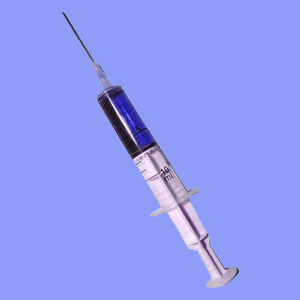
A sciatica injection is a general term used to describe the various needle-based therapy options typically used to treat back and leg pain syndromes. Epidural injections are the most common type of moderate syringe therapy used for the majority of sciatica conditions. However, for some forms of sciatica, prolotherapy injections are also occasionally utilized to enact a natural healing response from the body. In cases of pseudosciatica, alternative injection methods, like Botox, have been useful for controlling spasms thought to be sourced from piriformis syndrome.
This article provides a look at various types of injection treatment for sciatic nerve pain.
Epidural Sciatica Injections
Epidural injections are given directly into the spinal structures. These are used for symptoms diagnosed as coming from an identified spinal source, such as a herniated disc, chemical radiculitis, osteoarthritis, facet joint syndrome and a variety of other anatomical concerns. Epidurals are composed of a mixture of cortisteroid ingredients, local anesthetics and flushing solutions.
Steroid injections for sciatica are sometimes referred to as cortisone injections or lower back pain injections. These injections should always be administered by a spinal surgeon, using the latest fluoroscopy equipment.
Epidurals will minimize any inflammation which exists and may help to flush away proteins which can irritate neurological tissue. Many patients find relief from these injection treatments, but few achieve lasting symptom resolution. In essence, epidural therapy is usually little more than an extended duration method of pain management.
Prolotherapy Injections
Prolotherapy is a completely different approach to healing used for some types of pseudo-sciatica complaints, such as sacroiliac joint pain and piriformis syndrome. Prolotherapy does not use drugs, but instead injects an irritating natural solution which is very painful for several days to several weeks. This irritating substance will elicit a natural healing response from the body, hopefully eliminating or at least reducing the symptomatic expression.
Although the concept of prolotherapy is promising, the technique remains controversial and speculative for most conditions.
For pseudo-sciatica patients, Botox may be a better option, since this type of injection may help calm spasms thought to enact piriformis pain. Botox can also be useful for general muscular lower back pain which is so common to experience in conjunction with sciatica.
Sciatica Injection Expectations
Epidural injections and Botox are purely symptomatic treatment. They might help a little, a lot, or not at all. Results range from insignificant to acceptable, but relief may only last a few days in many cases and tops out at about 3 months in the best case scenario. This is not very different than taking oral medications, with the exception that at least the drugs are limited in where they can affect, as opposed to oral drugs which can stream throughout the body causing known and unknown side effects.
Prolotherapy may be worth investigating for some types of sciatica pain, but always remember that the majority of SI joint and piriformis related syndromes are grossly misdiagnosed, making the injections contraindicated anyway.
One thing is for sure, injection therapy is not typically a cure, except in rare instances of confirmed chemical radiculitis. In these circumstances, an epidural flushing injection might just be the ideal solution to the problem.
Talk to your doctor to learn more about any of these types of injection therapies.





